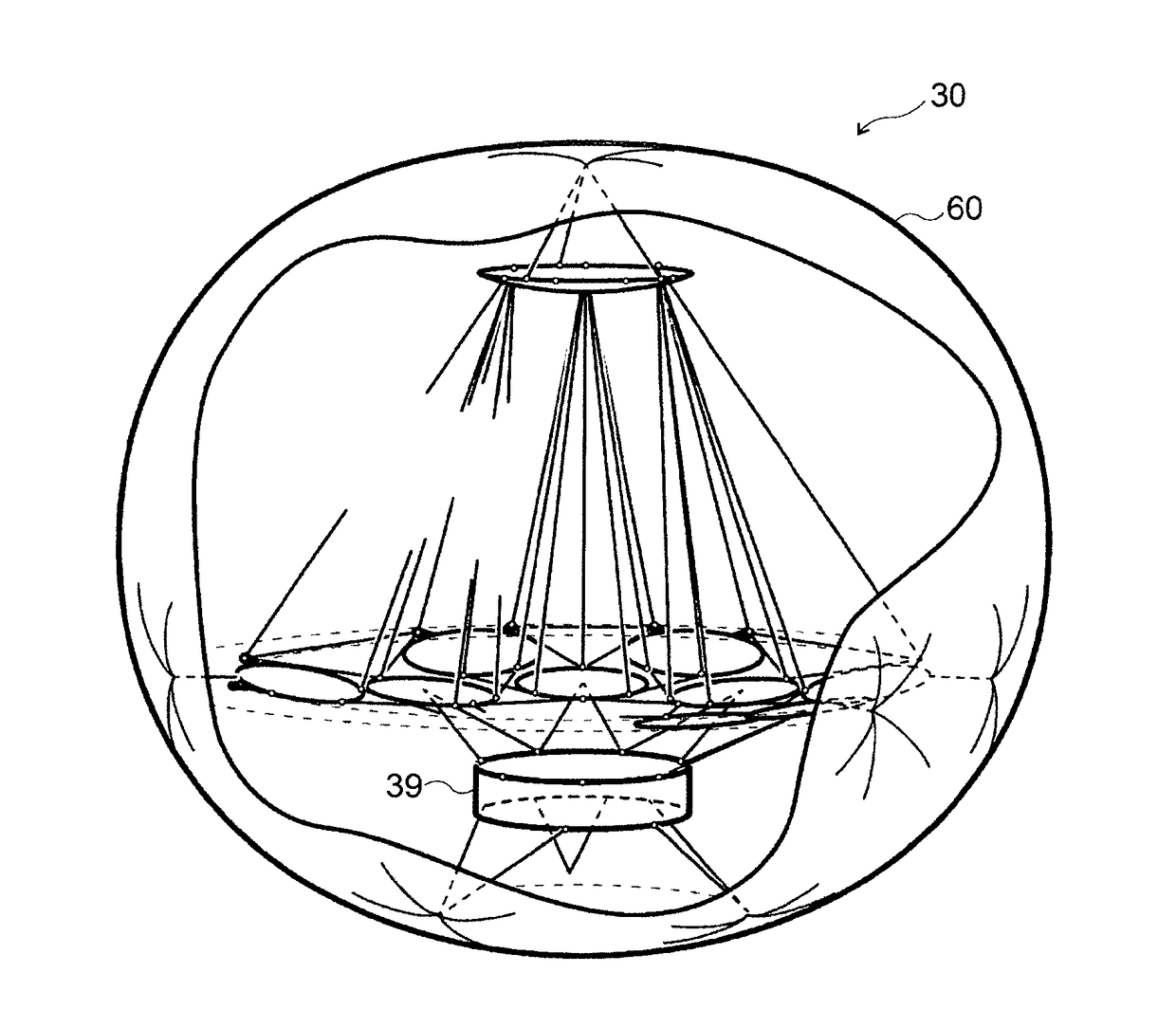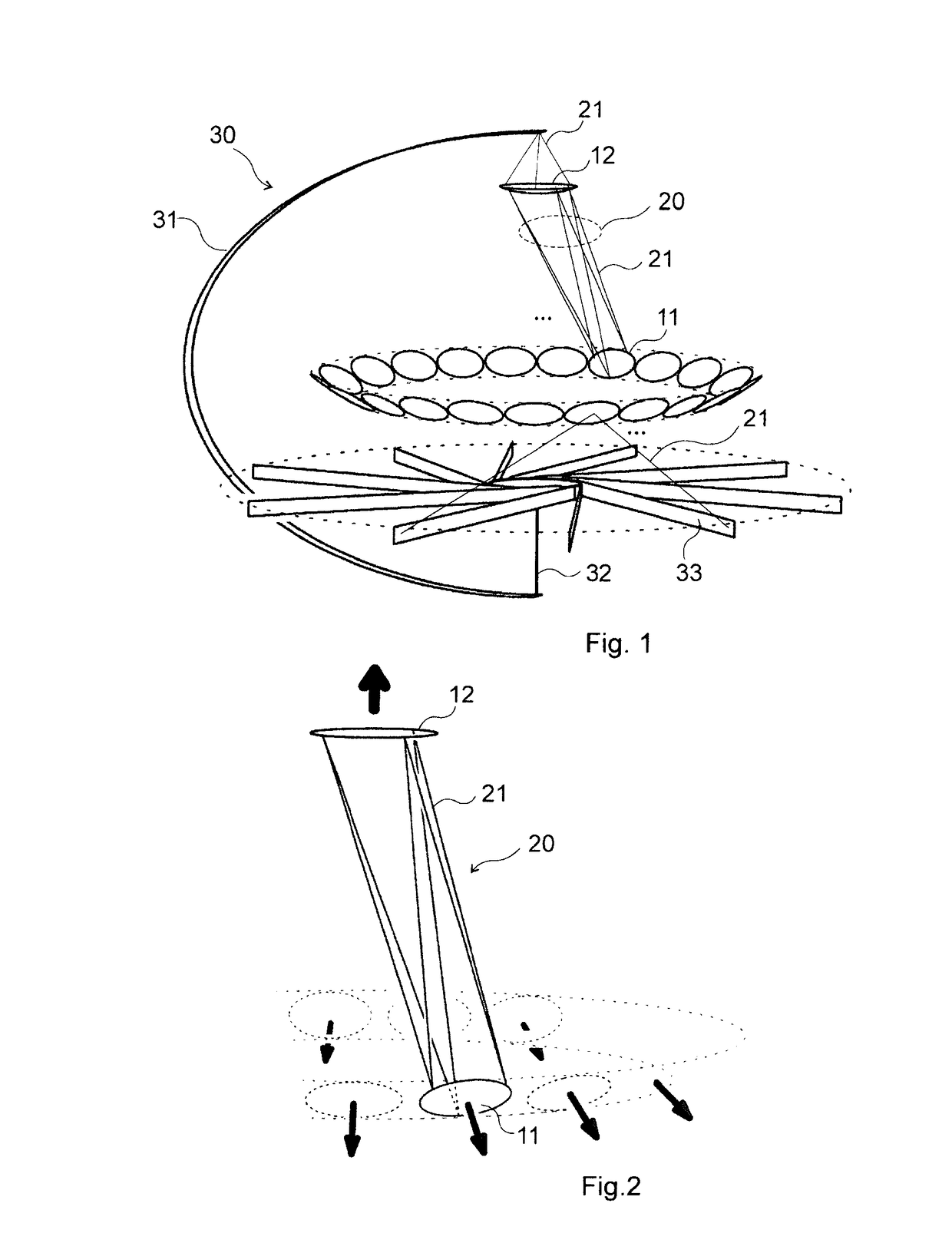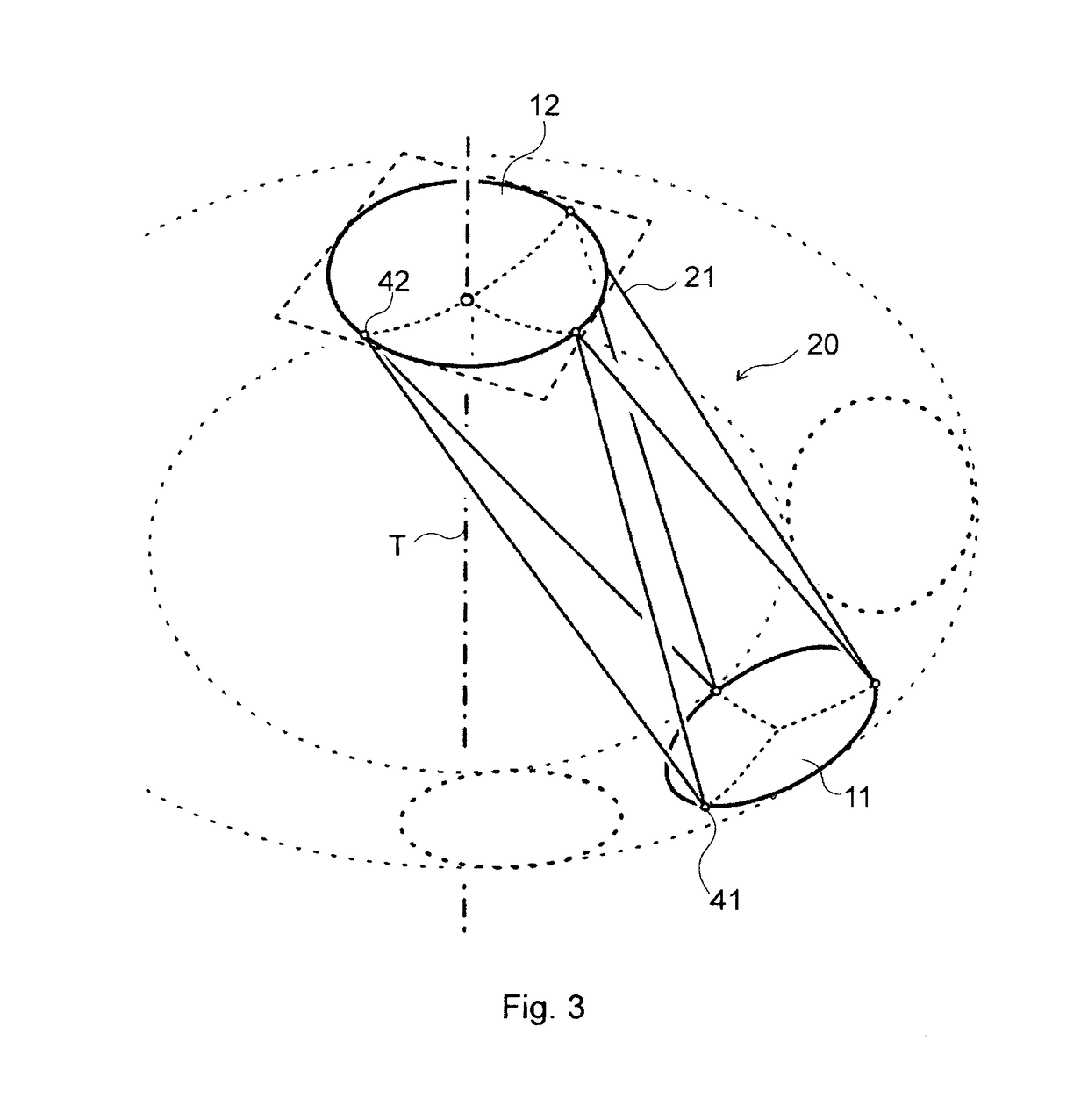Tension Structure For The Spatial Positioning Of Functional Elements
a functional element and tension structure technology, applied in the field of structure, can solve the problems of becoming an increasingly difficult technological challenge, imposing practically insurmountable challenges, and reducing the range of visible light (wavelength down to 1 micron)
- Summary
- Abstract
- Description
- Claims
- Application Information
AI Technical Summary
Benefits of technology
Problems solved by technology
Method used
Image
Examples
Embodiment Construction
[0023]An object of the present invention is to provide a simple and efficient structure to hold form-retentive functional elements that are cooperatively functional in their operational state in a predetermined relative spatial arrangement. Form-retentiveness means that the functional elements do not collapse but essentially maintain their form even without any external form-maintaining forces. A further object is to provide structures with form-retentive functional elements and with new stowage solutions that are not possible with prior art technologies. A further object is to provide deployable structures that can open up to their operational configuration in ways different from those enabled by prior art technologies. A further object is to provide new kinds of robust structural forms, and a still further object is to achieve high precision for such purposes. A still further object is to provide easily adjustable structures.
[0024]The objects according to the invention have been r...
PUM
 Login to View More
Login to View More Abstract
Description
Claims
Application Information
 Login to View More
Login to View More - R&D
- Intellectual Property
- Life Sciences
- Materials
- Tech Scout
- Unparalleled Data Quality
- Higher Quality Content
- 60% Fewer Hallucinations
Browse by: Latest US Patents, China's latest patents, Technical Efficacy Thesaurus, Application Domain, Technology Topic, Popular Technical Reports.
© 2025 PatSnap. All rights reserved.Legal|Privacy policy|Modern Slavery Act Transparency Statement|Sitemap|About US| Contact US: help@patsnap.com



